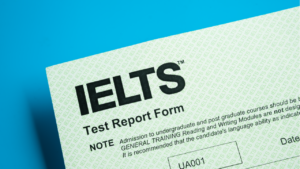Bird Migration is the seasonal movement of birds from areas of low resources to areas of high resources. Generally, birds that reside in the Nothern Hemisphere tend to migrate northward in the spring and towards the south in winter.
Let’s explore this blog further and learn more about the reading passage of IELTS, Bird Migration Reading Answers and help you increase your reading skills and comprehension for better scores.
Good luck with your preparation!
Leap Advantage Virtual Spot Offer Event on May 10th 2024

Last call to secure your spot for Masters in STEM Program in the US for Fall ’24 exclusively for graduates and above.
Leap Advantage Virtual Spot Offer Event on May 10th 2024
Last call to secure your spot for Masters in STEM Program in the US for Fall ’24 exclusively for graduates and above.

5 Interesting Facts About Birds
Birds charm us with their beauty and amazing abilities, such as their ability to sing melodious songs, their beautiful feathers, and their incredible diversity. These creatures are much more than just some creatures being able to fly, they represent nature in its purest and most beautiful form.
Here are some interesting facts about birds
- A bird’s heart beats up to 1000 times per minute while flying.
- The Kiwi of New Zealand is the only Wingless Bird in the world.
- A Penguin is the only bird that can walk straight.
- Crows have the largest brain in relation to the body of any avian family.
- An owl can turn its head 360 degrees but it cannot move its eyes.
Bird Migration Reading Passage
You should spend approximately 20 minutes answering Questions 1 – 13 based on the Reading Passage below.
Bird Migration
- Birds’ various distinctive design elements allow them to pull off such astounding endurance feats. They have hollow, light-weight bones, intricately patterned feathers that provide thrust and lift for swift flight, navigation systems that are far superior to those created by humans, and a clever heat-conserving structure that, among other things, emphasises all blood circulation below layers of warm, water-resistant plumage, making them capable of surviving in the harshest climates. Their respiratory systems must function effectively during prolonged altitude flights, thus they have an oxygen extraction system from their lungs that is significantly superior to that of any other mammal. Their bodies can build up significant amounts of fat throughout the later stages of the summer breeding period, when food is abundant, to give them enough energy for their lengthy migratory trips.
- Finding enough food during the winter, when it is scarce, is the primary driver behind bird migration. This is especially true for birds that breed in the Northern Hemisphere’s temperate and arctic regions, where there is an abundance of food throughout the brief growing season. Many species must move when food is sparse since they can withstand frigid conditions if there is plenty of it. But intriguing issues still exist.
- Many birds go farther than would be necessary only to locate food and favourable weather, which is a curious reality. Nobody is sure why British swallows don’t travel thousands of miles further to their preferred winter habitat in South Africa’s Cape Province,despite the fact that they could certainly make it through the winter in equatorial Africa. The huge migrations performed by shorebirds that breed close to the poles and arctic terns that hunt on mudflats are still unresolved. In general, migrating species spend their winters farther south the further north they breed. This requires an annual round trip of 25,000 kilometres for arctic terns. All of these individuals, however, fly over other regions of what appears to be ideal habitat spanning two hemispheres en route to their eventual destination in remote southern latitudes. Whilst we may not entirely comprehend the reasons why birds visit certain locations, we can nevertheless be in awe of their accomplishments.
- One of the biggest mysteries is how young birds, who don’t have parental supervision, can find the typical wintering locations.Fewer people travel with young children, and occasionally kids don’t even know what their parents seem like. The cuckoo, which lays its eggs in the nest of another species and never sees its young again, is a well-known example. It is incredible to think that after being nurtured by its host species, the young cuckoo migrates to its original tropical wintering habitats before returning alone to northern Europe the next season to seek for a mate among its kind. The logical conclusion is that it receives from its parents an innate ability to navigate and find its way, as well as a mental image of another cuckoo. However, no one has the foggiest notion how this is even conceivable.
- There is growing proof that birds utilise the sun and stars’ positions as compass directions. Additionally, they appear to be able to sense the earth’s magnetic field, which is possibly because their brains contain tiny magnetite crystals. However, accurate navigation also necessitates a sense of place and time, particularly when being lost. Birds can still quickly return to their nesting locations even after travelling thousands of kilometres over an alien terrain, according to experiments. Such extraordinary abilities are the result of the computation of a number of complex stimuli, such as an innate map of the night sky and the pull of the earth’s magnetic field. Unknown is how the birds employ their “instruments,” but one thing is certain: their sensory awareness of the environment is superior to ours. The majority of tiny birds migrate at night and follow the position of the setting sun. Nevertheless, in addition to witnessing the sun set, they also appear to see the plane of polarised light that it produces, which serves to calibrate their compass. Other advantages of nighttime travel exist. Predators who hunt during the daylight hours are avoided, and there is less of the probability of being dehydrated from extended flight under hot, sunny sky. Additionally, the air is often calmer and cooler at night, which is perfect for stable, long-distance flight.
- All journeys, however, carry a significant amount of danger, and leaving on time is a skill in itself for arriving safely. This calls for using precise weather forecasts and taking advantage of suitable winds. Birds are skilled at both, and laboratory experiments have revealed that some of them can even detect the slight variation in barometric pressure between the room’s floor and ceiling. Birds frequently respond to weather fluctuations before there is any outward evidence of them. Lapwings, which consume grassland, travel from the Netherlands to the British Isles, France, and Spain as a cold front approaches. The birds might go hungry if the ground freezes. However, they make their way back to Holland before a thaw because of a pressure change that predicted an improvement in the weather.
- The day prior a letter announcing its release, a Welsh Manx shearwater that had been transported to America and freed was found returned in its burrow on Skokholm Island off the coast of Pembrokeshire! On the other hand, every autumn, a few North American birds are carried across the Atlantic by swift westerly tailwinds. They certainly make it to Europe without incident, however there is compelling evidence that some of them return to North America the following spring, having likely spent the winter with European migrants in warm African climates.
Crack IELTS Exam in first attempt

Attend Leap’s free masterclass to get tips, tricks and advance strategies to crack IELTS exam in first attempt
Crack IELTS Exam in first attempt
Attend Leap’s free masterclass to get tips, tricks and advance strategies to crack IELTS exam in first attempt

Bird Migration Reading Q & A
Questions (1 – 7)
Seven paragraphs comprise the reading passage, from A to G.
Pick the appropriate heading for each paragraph from the list of the headings below.
On the answer sheet, fill in the boxes 1 – 7 with the proper number, I-X.
List of Headings
- The best moment to migrate.
- The unexplained rejection of closer feeding ground.
- The influence of weather on the migration route.
- Physical characteristics that allow birds to migrate.
- The main reason why birds migrate.
- The best wintering grounds for birds.
- Research findings on how birds migrate.
- Successful migration despite the trouble of wind.
- The contrast between long-distance migration and short-distance migration.
- Mysterious migration despite lack of teaching.
- Paragraph A
- Paragraph B
- Paragraph C
- Paragraph D
- Paragraph E
- Paragraph F
- Paragraph G
Answers with explanation (1-7)
- IV
Reference:
From paragraph A, ‘They have hollow, light-weight bones, intricately patterned feathers that provide thrust and lift for swift flight, navigation systems that are far superior to those created by humans, and a clever heat-conserving structure that, among other things, emphasises all blood circulation below layers of warm, water-resistant plumage, making them capable of surviving in the harshest climates.’
Explanation: It is stated in the paragraph that the physical characteristics that allow birds to migrate are their lightweight bones, their feathers, their navigation system, and the heat-conserving structure they have.
- V
Reference:
From paragraph B, ‘Finding enough food during the winter, when it is scarce, is the primary driver behind bird migration.’
Explanation: According to the paragraph, the main reason behind bird migration is to find enough food during the winter when it becomes scarce.
- II
Reference:
From paragraph C, ‘Nobody is sure why British swallows don’t travel thousands of miles further to their preferred winter habitat in South Africa’s Cape Province, despite the fact that they could certainly make it through the winter in equatorial Africa.’
Explanation: The passage suggests that the reason why British swallows and other migrating bird species do not choose to go to closer feeding grounds during their migration is still unknown and remains an unresolved mystery. Despite the fact that they could survive the winter in other equatorial regions, they choose to migrate farther south during the winter season.
- X
Reference:
From paragraph D, ‘One of the biggest mysteries is how young birds, who don’t have parental supervision, can find the typical wintering locations. Fewer people travel with young children, and occasionally kids don’t even know what their parents seem like.’
Explanation: The paragraph talks about the mystery behind how young birds can find their typical wintering locations without any parental guidance or teaching. Despite the lack of supervision or knowledge, these birds can still migrate successfully, which is a fascinating phenomenon.
- VII
Reference:
From paragraph E, ‘There is growing proof that birds utilise the sun and stars’ positions as compass directions. Additionally, they appear to be able to sense the earth’s magnetic field, which is possibly because their brains contain tiny magnetite crystals.’
Explanation: According to the paragraph, there is growing evidence that birds use the positions of the sun and stars as compass directions. It also suggests that birds can sense the earth’s magnetic field, which could be due to the presence of tiny magnetite crystals in their brains. These findings provide insights into the navigation abilities of birds during migration.
- I
Reference:
From paragraph F, ‘Birds frequently respond to weather fluctuations before there is any outward evidence of them. Lapwings, which consume grassland, travel from the Netherlands to the British Isles, France, and Spain as a cold front approaches.’
Explanation: Birds respond to weather fluctuations before any outward evidence of them. Lapwings have been observed to migrate from the Netherlands to the British Isles, France, and Spain as a cold front approaches. Therefore, it can be said that this is the best time for them to migrate.
- VIII
Reference:
From paragraph G, ‘On the other hand, every autumn, a few North American birds are carried across the Atlantic by swift westerly tailwinds. They certainly make it to Europe without incident, however there is compelling evidence that some of them return to North America the following spring, having likely spent the winter with European migrants in warm African climates.’
Explanation: The paragraph states that despite the difficulties caused by the wind, some North American birds can migrate to Europe and then return to North America the following spring, which demonstrates the effectiveness and adaptability of bird migration.
Question (8-9)
Pick TWO letters from A – E.
Fill boxes 8 & 9 on the answer sheet with the appropriate letters.
Which TWO of the following claims about bird migration are true?
A. Birds frequently fly farther than necessary.
B. Birds that travel in families are secure.
C. Nighttime bird flying requires less water.
D. Compared to humans, birds have far sharper eyesight.
E. Only migratory birds can withstand heavy winds.
Answer with explanations (8-9)
- A
Reference:
From paragraph C, ‘Many birds go farther than would be necessary only to locate food and favourable weather, which is a curious reality.’
Explanation: According to the statement, it can be concluded that birds often travel beyond what is strictly required to find food and good weather. Therefore, answer choice A, “Birds frequently fly farther than necessary.”
- C
Reference:
From paragraph E, ‘Additionally, the air is often calmer and cooler at night, which is perfect for stable, long-distance flight.’
Explanation: It’s interesting that the passage paints a vivid picture of how birds fly farther than necessary and mentions that the air is often calmer and cooler at night, making it perfect for stable, long-distance flight. It also highlights that nighttime bird flying requires less water, which is essential for survival.
Question (10-13)
Complete the notes below.
Write NO MORE THAN TWO WORDS for each answer.
Fill in the 10 – 13 on your answer sheet with your answer sheet with your responses.
10. How juvenile birds like cuckoos can locate their wintering sites without_________is a huge enigma.
11. There is proof that birds can determine directions like a ____________ by looking at the sun and stars.
12. One benefit of nighttime flying for birds is that they can avoid __________ contact with.
13. According to laboratory testing, birds can sense weather without the ___________ cues.
Answer with explanations (10-13)
- Parental Guidance
Reference:
From paragraph D, ‘One of the biggest mysteries is how young birds, who don’t have parental supervision, can find the typical wintering locations. Fewer people travel with young children, and occasionally kids don’t even know what their parents seem like.’
Explanation: It’s truly amazing how young birds, particularly cuckoos, can locate their wintering sites without parental guidance. It’s something of a mystery and a wonder of nature. But, it can be difficult for young children to navigate the world without parental supervision and guidance, especially when travelling to unfamiliar places.
- Compass
Reference:
From paragraph E, ‘There is growing proof that birds utilise the sun and stars’ positions as compass directions.’
Explanation: Birds can use the sun and stars’ positions as compass directions, enabling them to navigate and orient themselves during migration.
- Predators
Reference:
From paragraph E, ‘Predators who hunt during the daylight hours are avoided, and there is less of the probability of being dehydrated from extended flight under hot, sunny sky.’
Explanation: The paragraph states that birds possess hollow bones, intricate feathers, superior navigation systems, and heat-conserving structures, that allow them to endure long flights and survive in harsh climates. It also discusses how finding enough food during the winter is the primary driver behind bird migration.
- Visible
Reference:
From paragraph F, ‘Birds frequently respond to weather fluctuations before there is any outward evidence of them.’
Explanation: As per the paragraph, birds can sense weather fluctuations before there is any visible sign of them. This ability of birds has been observed in laboratory testing as well.
Summing Up
Bird migration is an interesting fact that allows birds to travel thousands of kilometres to find better resources and habitats. The unique design elements of birds, such as their hollow bones, intricate feathers, and superior navigation systems, allow them to accomplish such endurance feats.
While much is still unknown about why birds visit certain locations or how young birds navigate without parental supervision, we can still be in awe of their incredible abilities.
To improve your reading skills and comprehension of the reading section of IELTS, the passage on bird migration reading answers can help you understand birds and nature, and score well in IELTS.
For more guidance, you can contact our Leap IELTS Expert Team.
Frequently Asked Questions (FAQs)
Q. What is bird migration?
Ans. Bird migration is the regular seasonal movement of birds from one region to another. It usually involves long-distance travel, and birds undertake these journeys to find better breeding grounds, food sources, or more favourable climates.
Q. Why migration is essential for birds?
Ans. Migration is essential for birds because it helps them find better breeding grounds with more food sources and favourable climates. During their long journeys, birds also help pollinate plants, disperse seeds, and control insect populations, all of which play important roles in maintaining healthy ecosystems. By migrating, birds also reduce competition for resources in their breeding and wintering grounds, allowing for more efficient use of available resources.
Q. Which bird migrates the longest distance?
Ans. The bird that migrates the longest distance is the Arctic Tern. This bird travels from its breeding grounds in the Arctic to its wintering grounds in the Antarctic and back again every year, covering a distance of up to 71,000 km round-trip. Other birds that undertake long migrations include the Sooty Shearwater, the Bar-tailed Godwit, and the Red Knot.
Q. How can bird migration be studied and monitored?
Ans. Bird migration can be studied and monitored using a variety of methods. Some of the most common include:
1. Bird banding
2. Satellite tracking
3. Radar monitoring
4. Visual surveys
5. Acoustic monitoring
Q. How do human activities impact bird migration?
Ans. Human activities can have a significant impact on bird migration in several ways. By taking steps to reduce these impacts, such as preserving habitats, reducing pollution, and regulating hunting and trapping, humans can help protect and support healthy bird migration patterns. Some of the most common impacts include:
1. Habitat loss
2. Climate change
3. Light pollution
4. Hunting and trapping
5. Pollution
Q. What is important in IELTS reading?
Ans. In the IELTS reading section, it is important to be able to read and comprehend academic texts quickly and accurately. You will be given a series of passages on a variety of topics and asked to answer questions based on what you have read. To succeed in the reading section, it is important to:
1. Develop strong reading skills
2. Build vocabulary
3. Understand question types
4. Manage time effectively
Q. What are keywords in reading?
Ans. Keywords are specific words or phrases that are important in a particular text and can help you identify the main ideas and key information. In the context of IELTS reading, keywords are important because they can help you quickly locate relevant information and answer questions more accurately. When you are reading an IELTS passage, it can be helpful to identify the keywords related to the main topic or theme of the passage.
Q. What is the source of IELTS reading?
Ans. The source of IELTS reading passages is varied and can include a wide range of academic and non-academic texts, such as books, journals, newspapers, and magazines. The passages are typically chosen to represent a range of topics and styles and may cover subjects such as science, history, literature, and current events. The IELTS reading passages are designed to be challenging and to test your ability to read and comprehend academic texts in English.
Q. What preparation is needed for IELTS?
Ans. To prepare for the IELTS test, there are several steps you can take to improve your skills and increase your chances of success. Some of the most important steps you can take include:
1. Become familiar with the test format
2. Develop your English language skills
3. Take practice tests
4. Work on time management
5. Get feedback from others
Q. How many hours is enough for IELTS preparation?
Ans. The number of hours needed for IELTS preparation can vary depending on your current level of English proficiency and your target score. As a general rule, most experts recommend between 6-12 weeks of preparation before taking the test, with a total of 100-200 hours of study time. However, the amount of time you need to prepare can vary based on factors such as your skill level in each of the four sections, and your overall study pattern.
Q. What are the test rules?
Ans. There are several rules and guidelines that test-takers must follow when taking the IELTS test. These rules are designed to ensure a fair and secure testing environment for all participants. Some of the most important rules to be aware of include:
1. Identification
2. Prohibited items
3. Test format
5. Cheating and misconduct
Q. Can I make notes on the reading questions?
Ans. Yes, you are allowed to make notes on the IELTS reading questions and passages during the test. Generally, making notes can be a helpful strategy for improving your comprehension and accuracy on the test. When you are reading a passage, you can underline or circle keywords and phrases, write down summaries of each paragraph, or jot down any important details or supporting evidence.






